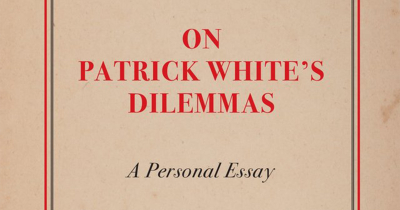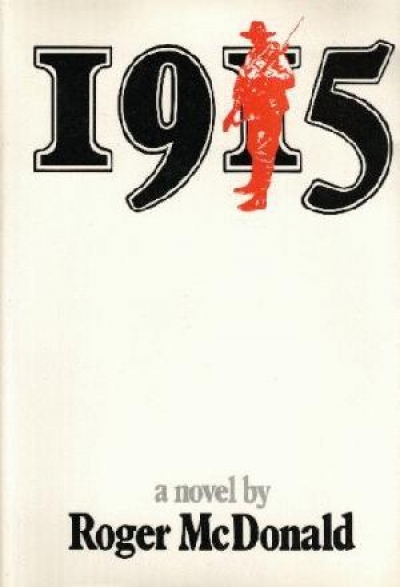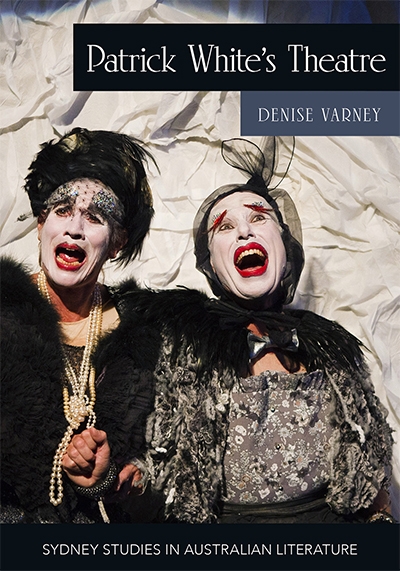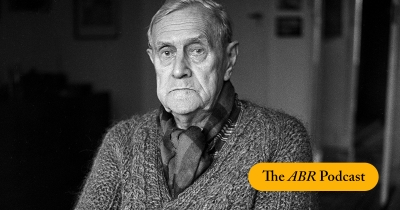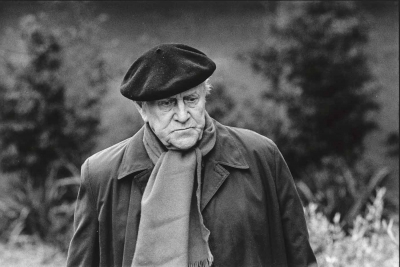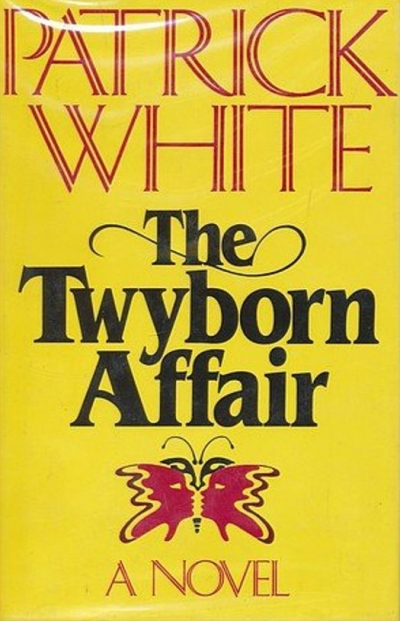Patrick White
On Patrick White’s Dilemmas: A personal essay by Vrasidas Karalis
‘Lonely Country’ is the term Arnhem landers use for empty or uncared-for places. Sometimes the custodians have died. In other cases, the land is simply too difficult to get to or inhabit. Whatever the reason, Lonely Country brings sadness. There is no one to burn the bush or manage it; no one to call out to the spirits of the old people who remain on their Country, isolated from the living.
... (read more)The dustjacket designer Christopher McVinish has given the title of this novel an unforgettable identity, with the figure of a soldier superimposed in red on the second one of 1915, which is in black. It is a powerful image that immediately announces the subject of the novel. Most of what follows is disappointing, and apparently not due to McVinish.
... (read more)In the program for the première of Voss in Adelaide in 1986, David Malouf observed:
... (read more)No libretto can reproduce the novel from which it is drawn. A novel, especially a great one, is itself: unique, irreplaceable. The best a libretto can do is reproduce the experience of the book in a new and radically different form, allowing the form itself to determine what the experience will be.
Patrick White’s Theatre: Australian modernism on stage, 1960–2018 by Denise Varney
Patrick White’s plays are conventionally assigned a marginal place in the landscape of his writing. Historically, they have either been regarded as poetic but unconvincing extensions of the performative dimensions of his prose, or as fundamentally misconceived exercises in contempt. Tim Winton spoke for the latter camp when, writing in the London Review of Books (22 June 1995), he dismissed White’s dramatic work as a ‘long and wasteful engagement with the theatre and its poisonous hangers-on’. Winton’s judgement is informed by a solitary model of authorship that can be applied to the rural metaphysics of White’s Castle Hill novels but that is increasingly inapplicable to the urbane satires his work became following his move to inner-Sydney in 1964.
... (read more)Patrick White, winner of the Nobel Prize for Literature in 1973, has long been considered Australia’s finest novelist. And yet, the thirtieth anniversary of his death in 2020 passed by with barely a murmur. Was this merely a consequence of the pandemic, or are there larger cultural forces at play? In today's episode, historian and ABR Calibre prize-winning essayist Martin Thomas considers the posthumous neglect of the great Australian writer, who once described himself as a ‘Londoner at heart’ and who continues to challenge jingoistic and complacent forms of nationalism.
... (read more)‘Your sense of permanence is perverted,’ said Holstius to Theodora Goodman in The Aunt’s Story (1948). ‘True permanence is a state of multiplication and division.’ The words are prescient, for Patrick White, who wrote them, has done rather well at dissolving into the impermanence of post-mortem obscurity. Perhaps unsurprisingly in view of the pandemic, the thirtieth anniversary of his death in 2020 left little imprint. No literary festival honoured the occasion, and no journal did a special issue. If White is looking down at us from some gumtree in the sky, he will be bathing in the lack of glory. He despised the hacks of the ‘Oz Lit’ industry as much as he loathed the ‘academic turds from Canberra’.
... (read more)What we know and how we think and feel are socially and thus historically conditioned. But it can also be geographically conditioned. ‘Australia’, as Mrs Golson remarks in The Twyborn Affair, ‘may not be for everyone ... For some it is their fate, however.’ Our subject is Patrick White and criticism of his work in Australia and my argument is that ours is a culture in general, and a literary culture in particular, with an indifference to and perhaps fear of hermeneutics, which George Steiner glosses as some ‘essential answerability’ implicit in the act of reading over and above understanding or – Leavis preserve us! – evaluation.
... (read more)Like every one of his previous novels, Patrick White’s latest work is both utterly characteristic and completely unpredictable. With the third line, we know we are in for another of White’s dissections of human behavior. ‘“Bit rough, isn’t it?” her chauffeur ventured.’ The verb almost parodies White’s careful placing of human acts any other writer would – perhaps rightly – consider insignificant. It is also characteristic of his more recent novels that the first people we meet are peripheral, people who serve both to comment on the action and to offer a commentary just by their presence. They are the reverse of the chorus of a Greek tragedy in that they are the problem to which the central characters address themselves rather than the passive victims of this address.
... (read more)Our new Laureate. Australian Book Review is thrilled to name Robyn Archer as our new Laureate. She joins David Malouf, who became the inaugural Laureate in 2014. Robyn Archer is ...
... (read more)‘Down at the Dump’ is the final story in Patrick White’s 1964 collection, The Burnt Ones. It begins with a colloquial ‘Hi!’, marooned on the story’s first line, and ends with a short, unpunctuated paragraph, intensely poetic, that recalls James Joyce at his least opaque: ‘The warm core of certainty settled stiller as driving faster the wi ...


